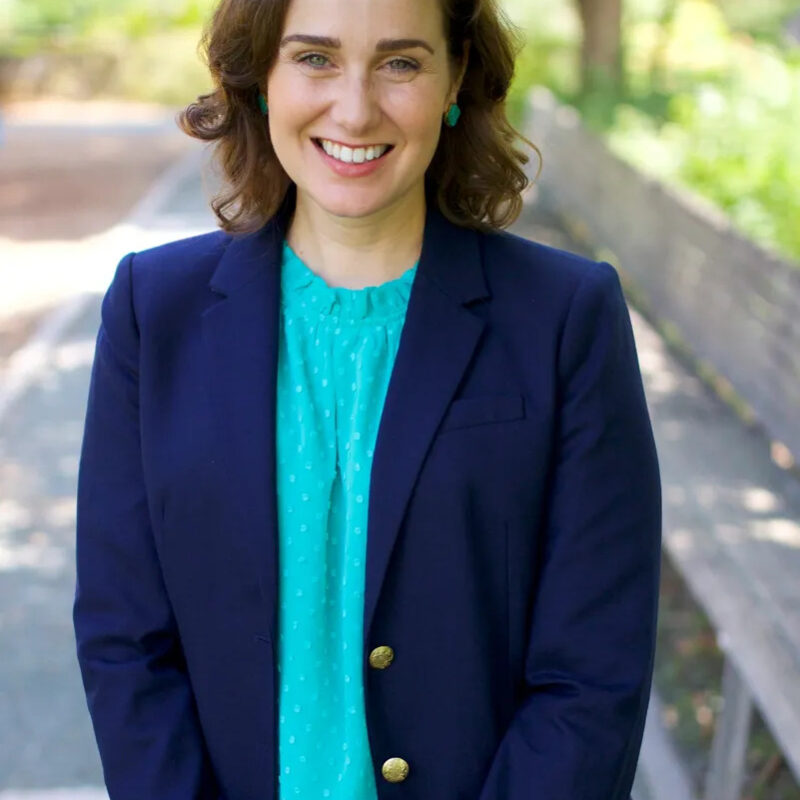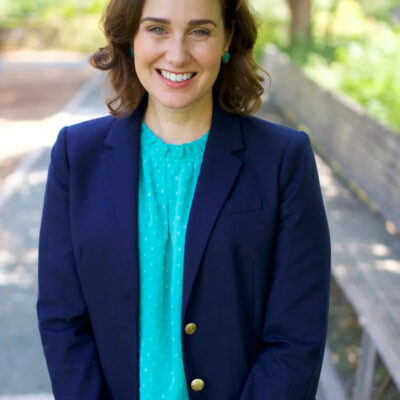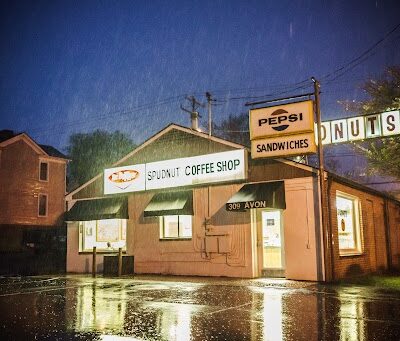(1) Coran Capshaw — CEO, Red Light Management/Starr Hill Presents
| JUMP TO:
• Up & Comers in this and the other four categories! |
Madonna sang that music makes the people come together. In Charlottesville—and, increasingly, in the rest of the world—nearly every aspect of that music carries the personalized touch of Coran Capshaw, who picks the bands, makes the venues and sets the tempo for us.

Coran Capshaw: Managing Dave Matthews Band may be a big job, but he still manages to keep an ear to every aspect of our local music scene while setting the tempo for bigger national trends in tunes. |
Last year Capshaw came into even more prominence as a manager and national music figurehead, thanks to high profile distribution deals with Radiohead and The Fireman, Paul McCartney’s side project. But the doors are still open locally: In addition to signing Alanis Morissette and The Decemberists, Red Light Management signed a pair of local acts—Parachute (now cashing in on a Nivea commercial spot) and Sons of Bill, who recorded their second full-length album.
If developments with Gravity Lounge are any indication, venues need backing like Capshaw’s now more than ever. With the Charlottesville Pavilion dominating entertainment options on the east end of the Downtown Mall and the long-awaited Jefferson Theater destined to dominate the west, Capshaw seems poised to take complete control of the Downtown Mall’s live music options.
Moreover, many of the shows that bring in big crowds at underattended spots—Music Resource Center, Outback Lodge and, perhaps most surprisingly, Fry’s Spring Beach Club—are gigs set in motion by Capshaw’s Starr Hill Presents booking company. The same goes for some of the biggest gigs hosted at John Paul Jones Arena, including Justin Timberlake, Bruce Springsteen, Dave Matthews Band, of course (Capshaw is DMB’s manager), and more. Add charitable contributions to spots like the Music Resource Center, and it seems inescapable: It’s Capshaw’s stage, folks—we just perform on it.
(2) John Gibson — Managing Director, Live Arts

John Gibson: More than the creative force behind Live Arts productions of Urinetown and Sweeney Todd, he uses the space at the cultural heart of the city to bring together the most inventive artistic minds and most challenging performances. |
Live Arts is the premier community theater in town and a cornerstone of Charlottesville’s image as an arts center, and the position of managing director would be a prominent and powerful place for any person to occupy. It speaks volumes, then, that John Gibson—the organization’s first full-time employee—has executed the position with a combination of creativity and authority that we’ve come to expect of Live Arts.
Sure, Gibson has left his director’s mark on more than a few memorable Live Arts productions, from 2004’s Angels in America to the recent Sweeney Todd: The Demon Barber of Fleet Street. But Gibson also oversees the selection of plays and projects that LA takes on each season, an effort that brings no shortage of challenging and on-the-verge productions to a local theater that feels more like part of the New York fringe.
If Live Arts is the leading home for theater in our city, then Gibson’s efforts to secure a home for the theater itself are worth a few standing ovations. Gibson memorably flexed his muscles as a fundraiser during the construction of the City Center for Contemporary Arts, a successful $3.6 million campaign that led to homes not only for LA but also for Light House Studio and Second Street Gallery. His network, built over 17 years in town and which he taps in his ongoing role as Live Arts’ chief fundraiser, includes virtually every person of note in the wider arts community here. Gibson sure seems to enjoy widespread support for and confidence in his choices.
(3) Kirby Hutto — General Manager, Charlottesville Pavilion
Fresh from the latest round of summer concert announcements—David Byrne, Jackson Browne, George Jones and Heart—it seems that few venues can compete with the stature of the acts booked by the Charlottesville Pavilion each year. Moreover, marquee local acts strive for spots at Fridays After Five or the occasional cushy opening slot for the paid shows. All acts go through Kirby Hutto, the Pavilion’s general manager, and the man Coran Capshaw tasked with jumpstarting the Fridays After Five series once the Downtown Mall’s largest venue opened.
Hutto’s recent work also involves his gig as project manager for the Jefferson Theater, which will give local booking agency Starr Hill Presents (also owned by Capshaw) an even stronger grip on the Downtown Mall and on 500-plus-capacity venues in the city. With the Jefferson Theater comes a powerful new role for Hutto: mentor. During the last year, Hutto worked closely with rising star Danny Shea, former Satellite Ballroom manager. While Shea will likely run Jefferson Theater as manager, he spent plenty of time tailing Hutto to get his footing.
If Capshaw’s money and venue holdings create a spot for live music in Charlottesville, then Hutto—through protégés like Shea, through his work to open the Jefferson Theater, and as a local music gatekeeper—runs ‘em.
(4) Jessica Nagle — Co-Executive Director, Festival of the Photograph

Jessica Nagle: Approaching only its third year, her annual Festival of the Photograph transforms our city into a living gallery without equal. |
The other four members of this list hold powerful offices connected directly with arts venues that house music, visual arts and theater nearly year-round. We say “nearly” because, for one week every year, Jessica Nagle’s Festival of the Photograph—now approaching its third year—controls almost every aspect of the arts scene in Charlottesville, taking over prominent gallery spaces, building sides, the Charlottesville Pavilion, and The Paramount Theater each summer.
For starters, Nagle, a co-founder of SNL Financial with Reid Nagle, assembled a dynamite Who’s Who list of local artists—Will Kerner, Will May, and her co-executive director Nick Nichols. From there, she used her local support to earn greater national funding and, subsequently, greater international attention. Both National Geographic and Apple signed on with the Festival as founding supporters, and continue to donate, alongside photo heavy-hitters like Canon. Her festival advisory board boasts photo editors and directors from the likes of The New York Times, Fortune and Aperture. And Nagle returns the favor, whether serving as Live Arts’ Gala chair alongside Jane Matthews in 2008 or supporting organizations like Light House Studio.
What’s more, Nagle’s celebrity retention rate is nothing short of spectacular: Featured artists from the previous installments of the Festival of the Photograph, including Eugene Richards and James Nachtwey, will return to conduct workshops during this year’s fest, from June 11 through 13. Nagle’s power is enough to make us hope the old adage is true: Take a picture—it’ll last longer.
(5) Lyn Warren — Proprietor, Les Yeux du Monde Gallery

Lyn Warren: With a new exhibition space under construction near her home, the woman behind Les Yeux du Monde hopes to draw the eyes of the local art scene to a striking new project. |
Lyn Warren owned the visual art gallery Les Yeux du Monde from 1996 to 2008, where she represented local luminaries like Lincoln Perry and Dean Dass, and displayed the clout to bring internationally important work, from Jean-Michel Basquiat and Romare Bearden to Andy Warhol.
The background Warren brings to her profession includes bridging the divide between public institutions (like the UVA Museum) and the commercial gallery scene. For example, Warren hosted major exhibits during both previous Festivals of the Photo, alongside Second Street Gallery and McGuffey Art Center. And there was a 2005 show by Piedmont Virginia Community College professor Chica Tenney that also showed at the UVA Museum. During Les Yeux du Monde’s time, it was undoubtedly the top private gallery in town.
Warren’s list of local artists remains the A-list, a roster that draws crowds of onlookers and buyers. Take Clay Witt’s December 2008 exhibit at Les Yeux, where the majority of his pieces in the sold-out show went for four or five figures and Les Yeux was packed.
True, her gallery closed its doors in December. But it’s tough to picture anyone but her making a go of art sales from home, which is what she’ll now be doing instead of operating a storefront (in a W.G. Clark-designed space in her Albemarle house, when we last heard.) It’s hard to imagine other gallery owners whose spaces have recently closed navigating such a move.





